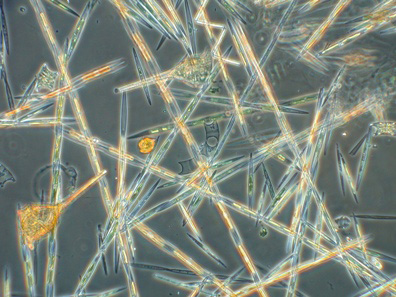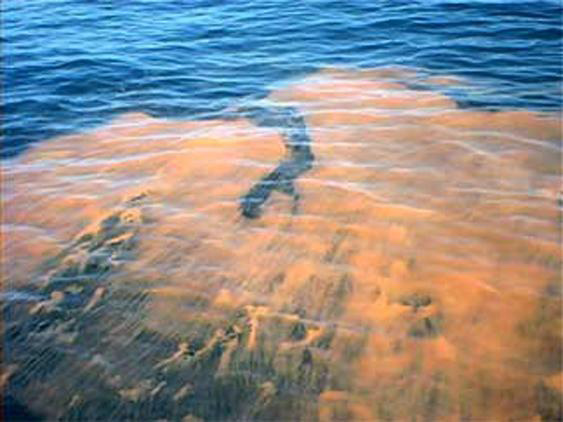There’s some great news for algae off the Pacific coast: conditions have been so great that a giant ribbon of microscopic algae, up to 40 wide and over 600 feet deep in places, is flourishing amid unusually warm Pacific Ocean temperatures. Unfortunately, although the algae is loving the warmer water and sunlight, other sea life and marine industries are suffering as a result.
A massive brown colored bloom, discovered earlier this summer, now stretches from California to Alaska. While all of the causes have yet to be determined, marine biologists have found one key suspect: a large patch of water, nicknamed “the blob”, running as much as 4 degrees (F) warmer than normal in the northeast Pacific Ocean.
The brownish bloom has been particularly thick near Santa Barbara, and is dominated by one type of algae called Pseudo-nitzschia, which can produce the neurotoxin domoic acid. The current bloom also involves some of the highest concentrations of domoic acid yet observed in Monterey Bay and other areas of the West Coast.
Domoic acid is harmful to people, fish and marine life. It accumulates in anchovies, sardines and other small fish, as well as shellfish that filter and eat the algae. Marine mammals and fish-eating birds in turn can get sick from eating the contaminated fish. In people, it can trigger amnesic shellfish poisoning, which can cause permanent loss of short-term memory in severe cases.
As a result of the bloom and possible toxicity, on Tuesday, August 4, shellfish managers doubled the area off Washington’s coast that’s closed to Dungeness crab fishing, where tested crab meat showed finding elevated levels of marine toxins. The area now closed to crab fishing in Washington is equal to half of the state’s 160-mile coastline. California public health officials have warned against eating recreationally harvested mussels and claims, anchovy, sardines or crabs caught in waters off Monterey, Santa Cruz and Santa Barbara counties. Other shellfish harvests are shut down along Oregon’s coast.
While it sounds gloomy, seafood lovers can still safely purchase and eat seafood bought in stores where it is regularly tested. There have been no reports of human illnesses linked to this year’s bloom, but as a precaution, authorities aren’t taking chances in fisheries with dangerous toxin levels.


